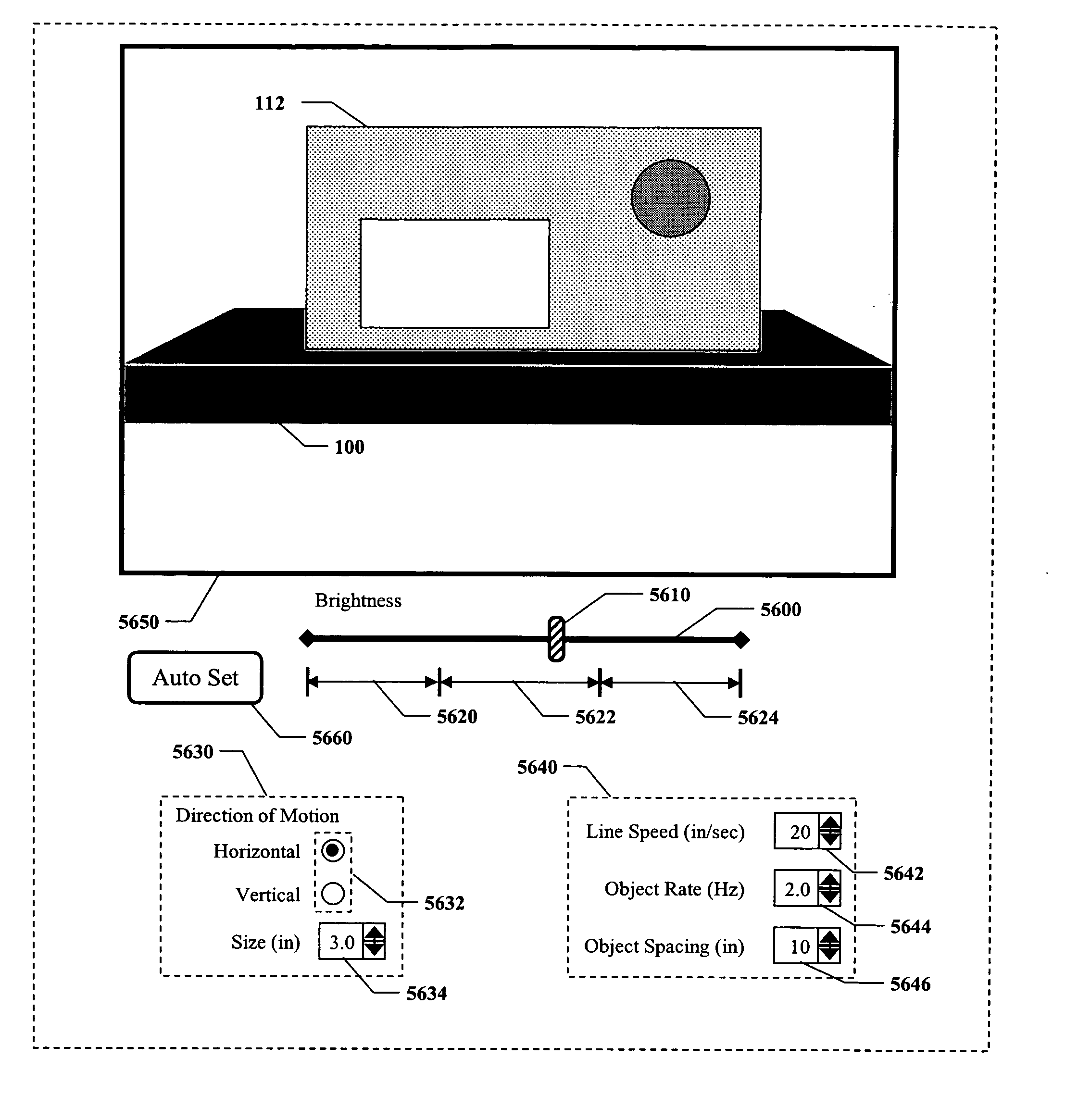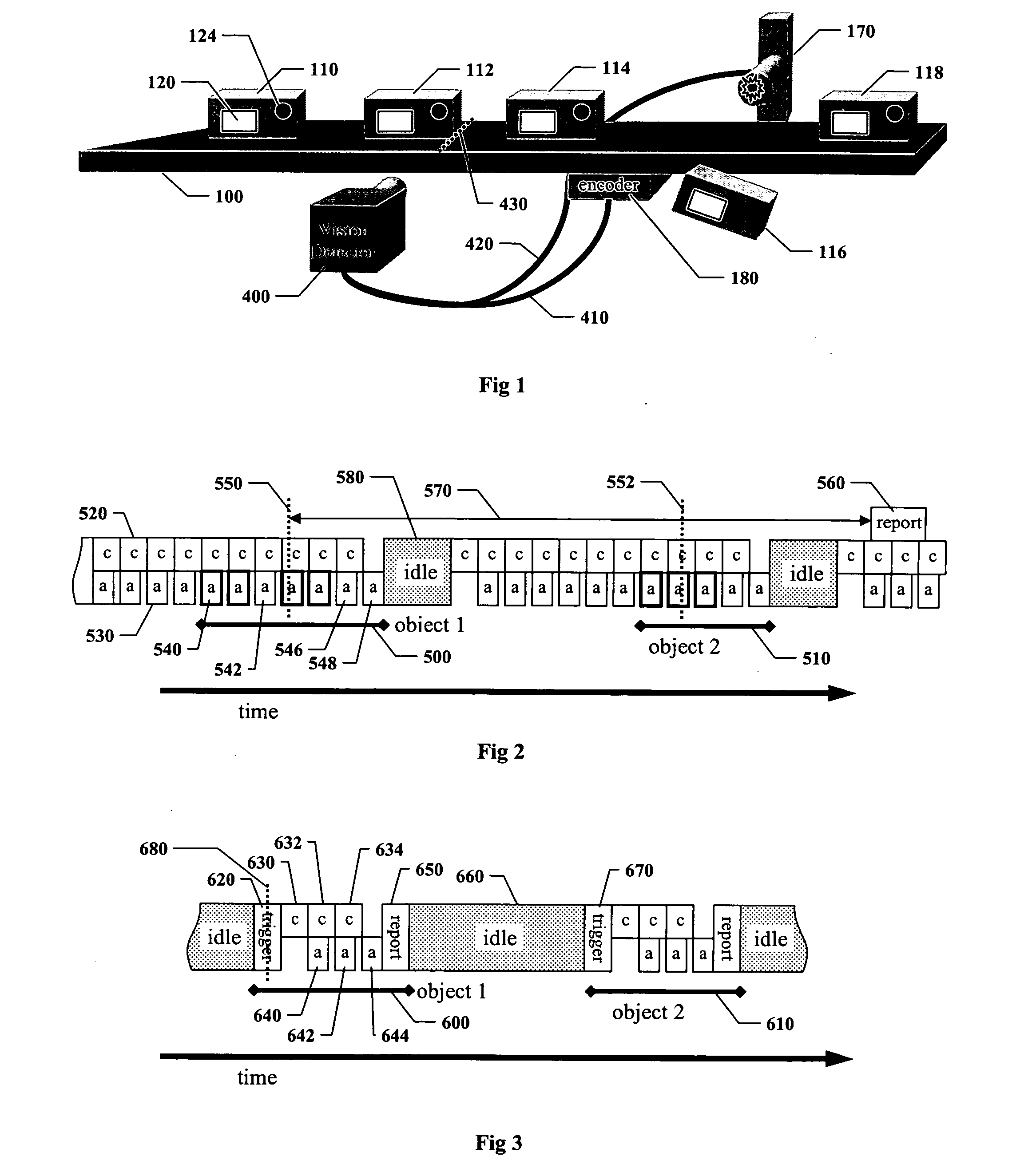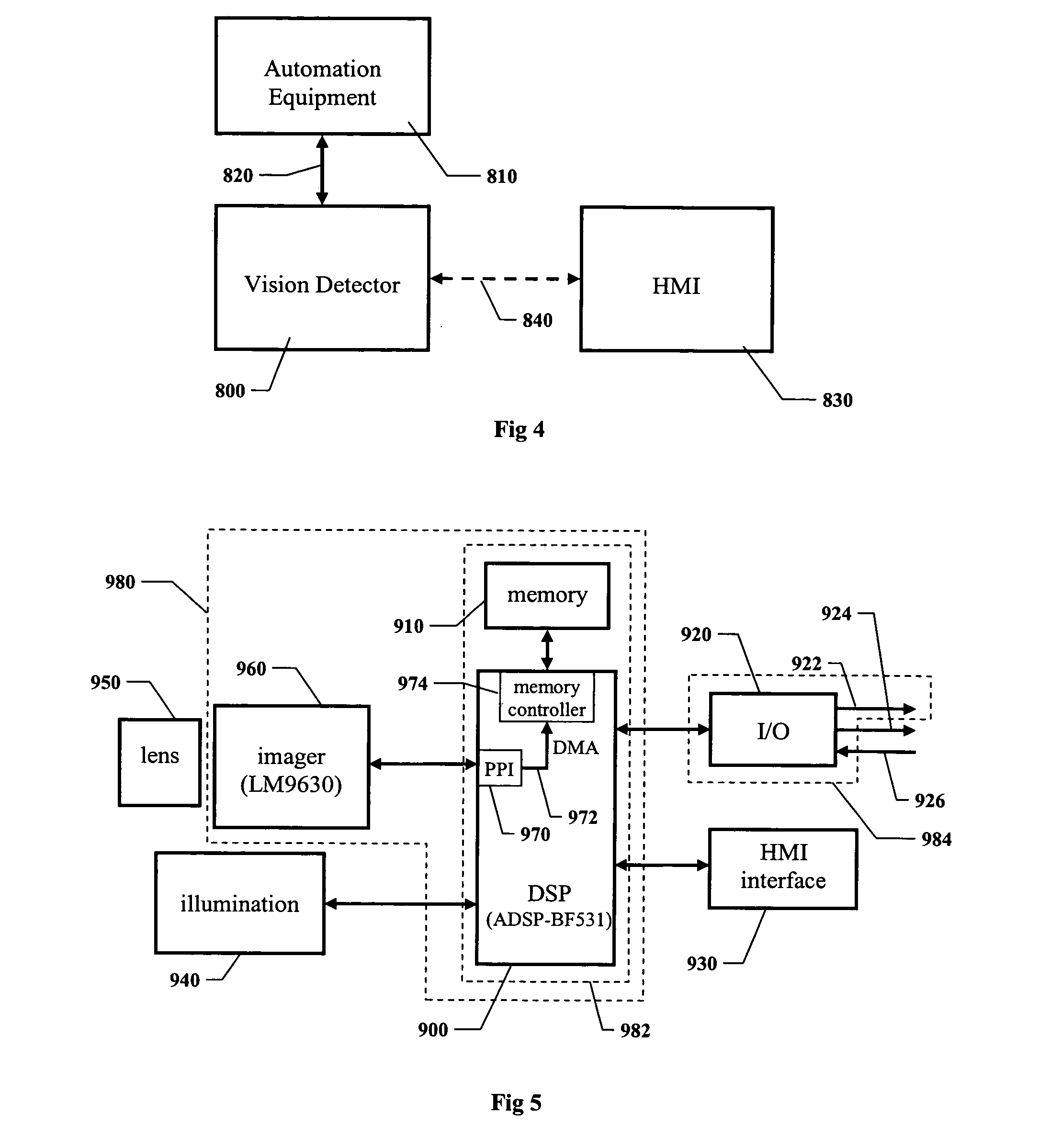Method for setting parameters of a vision detector using production line information
a production line and parameter setting technology, applied in the field of automatic detection and inspection of objects, can solve the problems of limitations of machine vision systems, and inability to make correct decisions
- Summary
- Abstract
- Description
- Claims
- Application Information
AI Technical Summary
Benefits of technology
Problems solved by technology
Method used
Image
Examples
Embodiment Construction
Basic Operation of The Vision Detector Method and Apparatus
[0096]FIG. 1 shows an illustrative embodiment of a vision detector according to the Vision Detector Method and Apparatus, inspecting objects on a production line. A conveyer 100 transports objects to cause relative movement between the objects and the field of view of vision detector 400. Objects 110, 112, 114, 116, and 118 move left to right on a conveyer 100. Each object is expected to contain certain features, for example a label 120 and a hole 124. Objects incorrectly manufactured may be missing one or more features, or may have unintended features; for example, object 116 is missing the hole. On many production lines motion of the conveyer is tracked by a shaft encoder 180. A vision detector 400 detects the presence of an object by visual appearance and inspects it based on appropriate inspection criteria. If an object is defective, the vision detector sends signal 420 to reject actuator 170 to remove the object from ...
PUM
 Login to View More
Login to View More Abstract
Description
Claims
Application Information
 Login to View More
Login to View More - R&D
- Intellectual Property
- Life Sciences
- Materials
- Tech Scout
- Unparalleled Data Quality
- Higher Quality Content
- 60% Fewer Hallucinations
Browse by: Latest US Patents, China's latest patents, Technical Efficacy Thesaurus, Application Domain, Technology Topic, Popular Technical Reports.
© 2025 PatSnap. All rights reserved.Legal|Privacy policy|Modern Slavery Act Transparency Statement|Sitemap|About US| Contact US: help@patsnap.com



